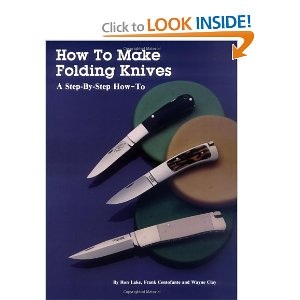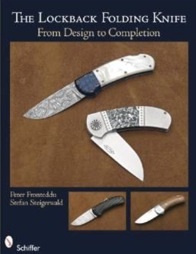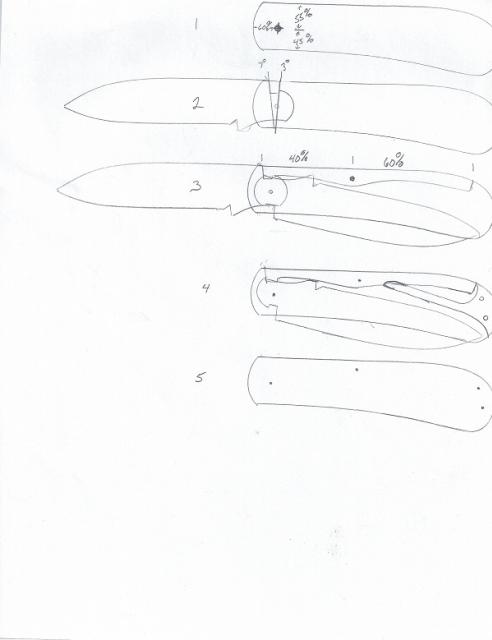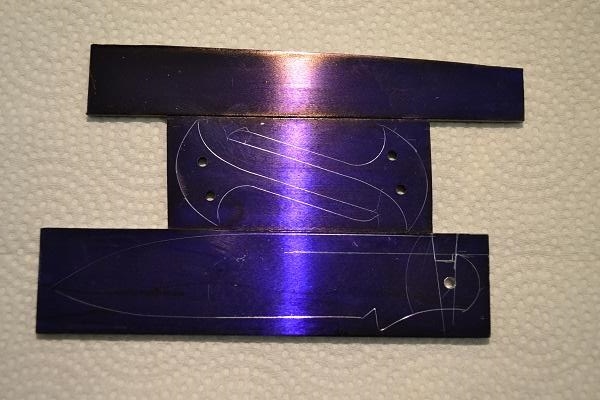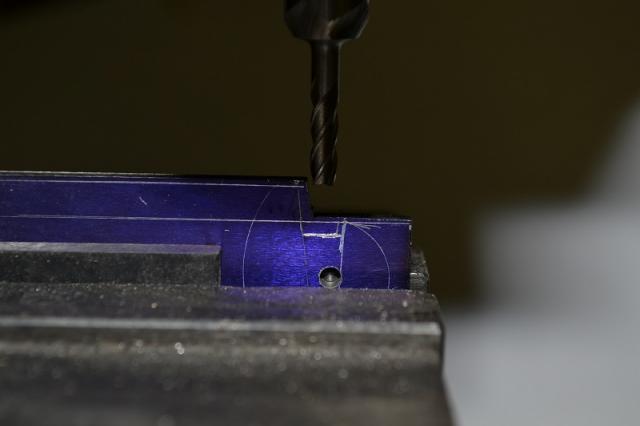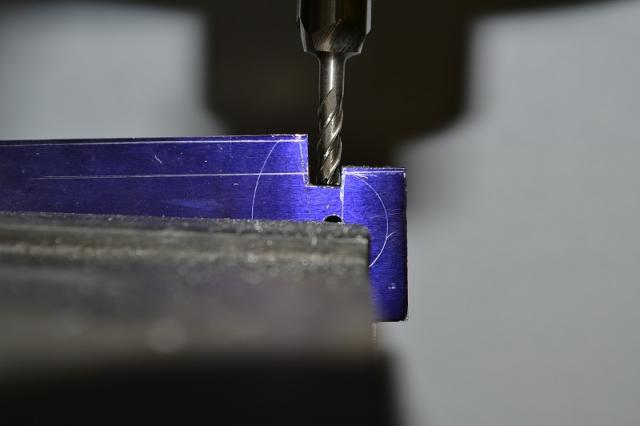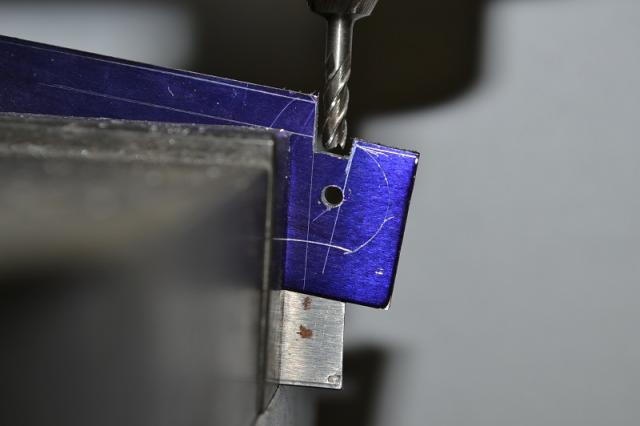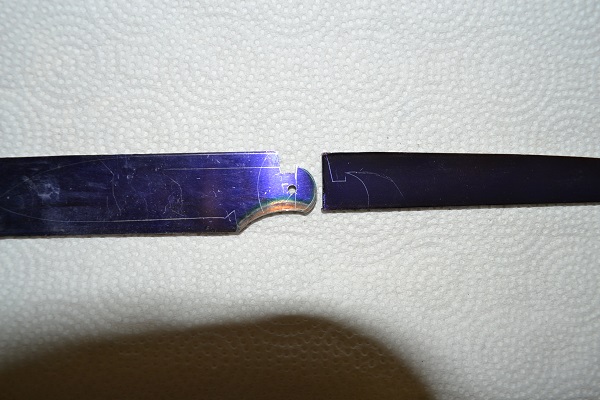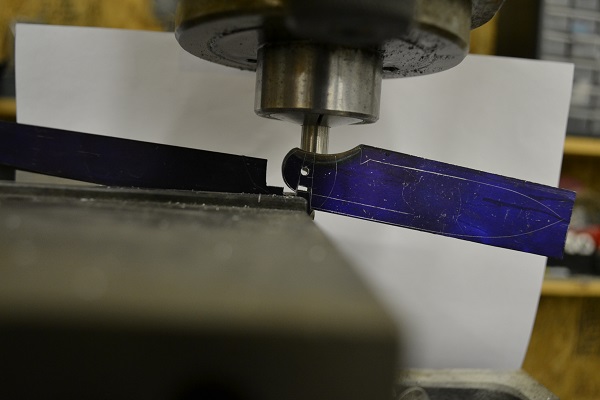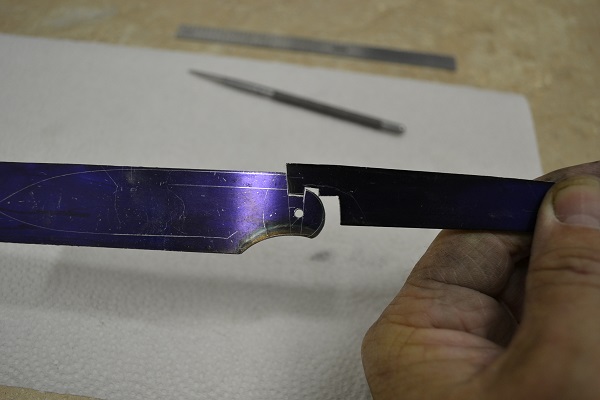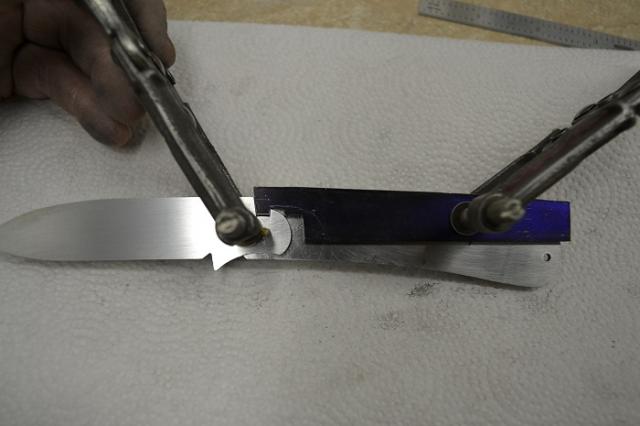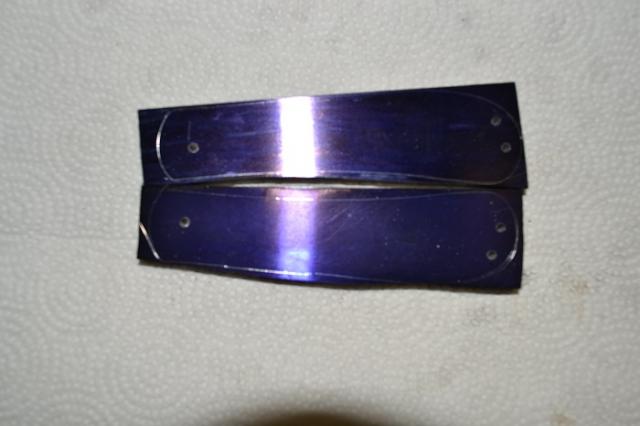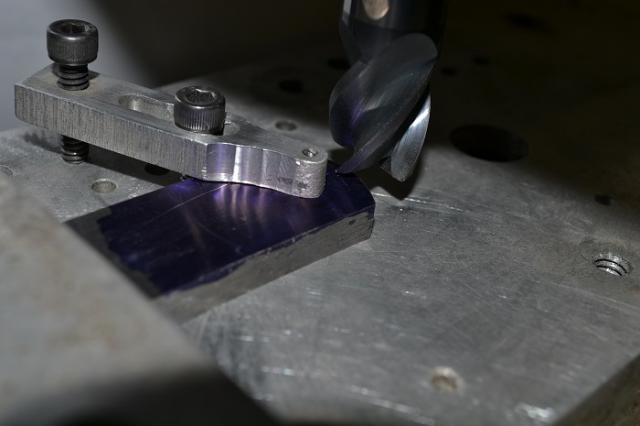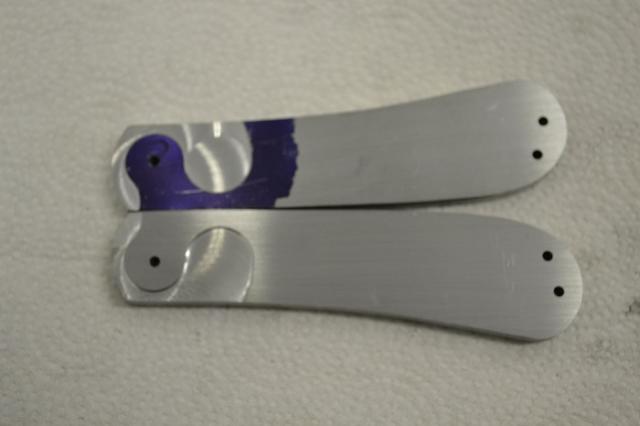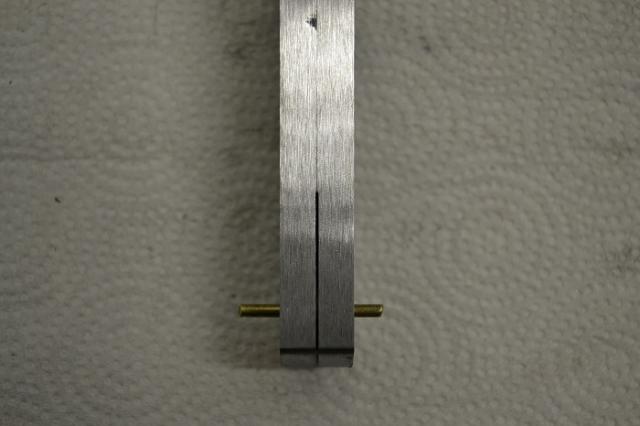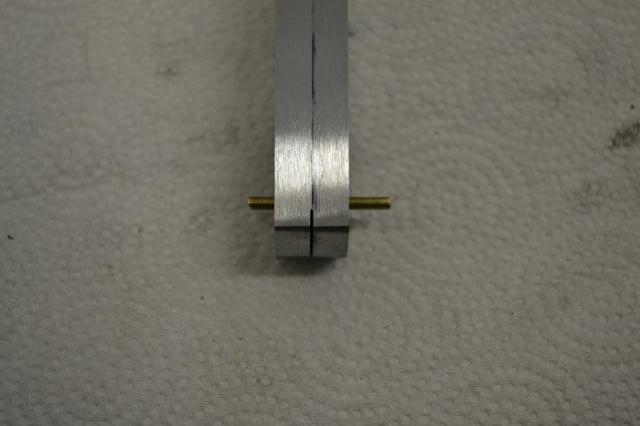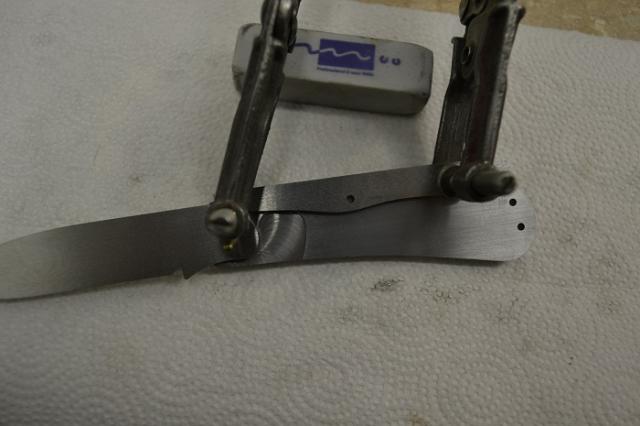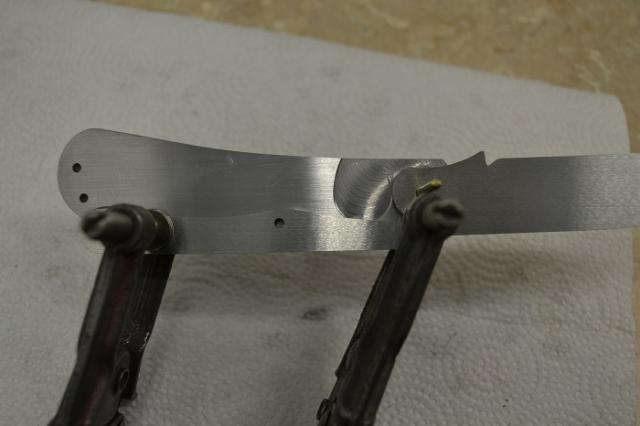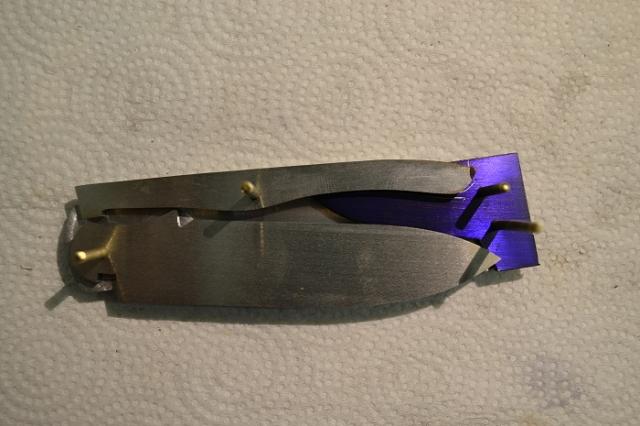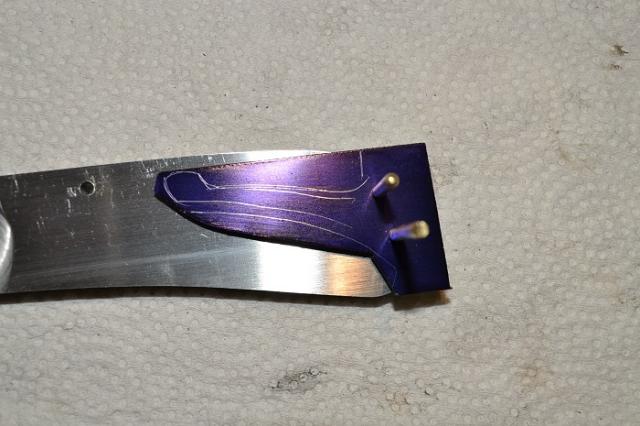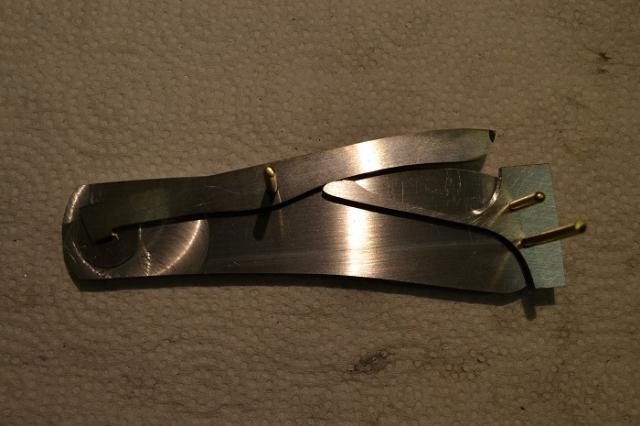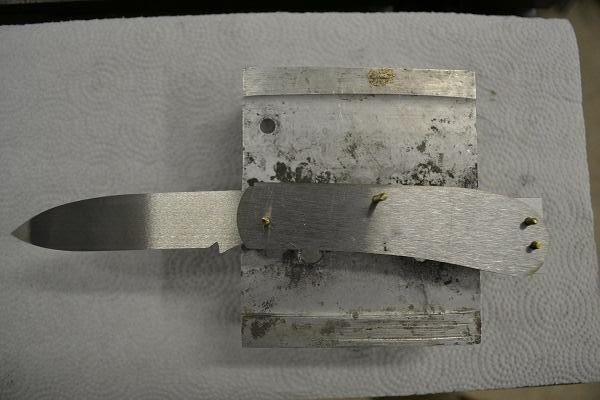The Topic of the Month for August 2014, is making locking folders. Post up any information you have on techniques used for making locking folders, of any type.
I haven't built any folders in quite a while but when starting this book by Ron Lake, Frank Centofante & Wayne Clay taught me more than anything else:
http://www.amazon.com/How-Make-Folding-Knives-Step-By-Step/dp/0873413903
Gary
Gary
I have the book and I agree that it is very useful.
Dan Cassidy
Journeyman Smith
Send an email to Dan

Another good book is;
"The Lockback Folding Knife"
By Peter Fronteddu and Stefan Steigerwald.
Lots of information on how to build lock backs with hand tools.
I will type up a little about how I make them and post it a little later.
Craig
Thank you Craig!
I located the book on Amazon at, Click: Book - The Lockback Folding Knife
Dan Cassidy
Journeyman Smith
Send an email to Dan

Well I see some books to add to the library. Thank you all.
Brion
Brion Tomberlin
Anvil Top Custom Knives
ABS Mastersmith
thanks fellas for the book tips......I've yet to attempt one so I will be watching this thread....and reading.....more !!
[font="Comic Sans MS"]'Never Quit On Improving'[/font]
|quoted:
The Topic of the Month for August 2014, is making locking folders. Post up any information you have on techniques used for making locking folders, of any type.
Steve, I will have a two DVD set on making a Damascus liner lock folder available September 15th. Anyone interested can contact me by email at: [email protected] or phone at : 406-210-4101. I'll try to answer any questions on liner locks that come up on the forum. Thanks, Rick Dunkerley MS
I will start out by saying this is just the way I make a lock back. This is not the only way or the right way, just the way that works for me with my tools and equipment in my shop.
When I make a folding knife I start with a pattern. If it is a new knife I will make a pattern before starting on the knife. At times there will be several revisions until I get to the final pattern. I normally make slip joint knives and a lot of the slip joint patterns will work for making lock back patterns with a few changes. If you do not have a pattern, start with a drawing. I draw out the handle shape to scale and then draw the blade to fit the handle. Use some thin steel for your patterns so they will last. I copy my patterns to 1095 so I can harden them later.
I use Ron Lake’s method from the book “How to Make Folding Knives†to locate the pivot and make the lock notch in the blade. More information can be found in this book.
Here is a scan of some drawings for a lock back. I traced a pattern I have and made the notes to speed things up a little. Transfer the drawing to your pattern steel and make the pattern.
Number 1 is the shape of the handle with the pivot hole located. The hole is located about 55% down from the spine of the handle and 45% from the inside of the handle. I set the hole about 60% or so from the front of the handle. This leaves the front of the handle a little over sized and I finish it to shape later when putting the knife together. Nothing worse than getting everything fitted up a find out the tang is sticking out the front of the knife. Drill the pivot hole and shape the handle for you pattern.
Number 2 is the handle with a blade drawn in. The lock notch is shaped with a 7 degree taper on the front and a 3 degree taper on the rear. The lock bar will be made with these same tapers. The end of the knife is drawn in for reference to keep the front of the lock notch within the handle. The rear of the lock notch is just behind the center of the pivot. The notch is deep enough to allow the lock bar behind the lock tab to be a little over the thickness of the bar. The tab will engage the lock notch about .030 and there needs to be a space between the bottom of the notch and bottom of the tab around .020 will work.
I round the tang on a rotary table and sand the marks off by hand. Keep the sand scratch length wise on the finished tang rather than across the tang. Use a file guide and a file or a mill to make the notch. I use a mill and I made a set of angle blocks at 3 and 7 degrees for the notch and lock tab on the lock bar. Clean up the inside of the notch with sand paper. I use a disc grinder with 600 grit paper and turn it by hand. We do not need power to clean this up.
When the lock notch is made in the blade, make the lock bar. I use a rectangle of steel and make the bar in the middle. That way I can shape it after the pivot hole is drilled. I put the tang of the blade on the lock bar with a little blade a little below the top of the lock bar. Scribe the lock notch and tang on the bar and cut, grind or mill the locking tab on the bar. Grind away a little of the bar toward the rear of the lock tab so the bar will clear the tang while fitting. Don’t worry about the shape of the bar or the pivot hole in the bar when fitting. Once the lock bar is fitted to the blade put the blade on the handle pattern with the lock bar fitted up. Mark the correct length for the bar, leaving enough room for the rear spacer / spring / spring holder depending on how you want to make this part. Number 4 shows a spacer/spring.
Grind the lock bar to length and mark it for the center hole at about 40% - 60% with the short part being toward the front of the hole. With the mar and spring mated and the pined through the pivot hole in the blade. Transfer the mark from the lock bar to the handle and drill the lock bar pivot hole in the handle make sure to leave enough room toward the spine of the handle to keep from grinding into the pin. Now pit the bar/blade back on the handle pattern and hold the lock bar into the blade tight set the angle the blade comes out of the end of the knife and clamp the blade and bar. We do not want the tip of the blade pointing up or down just a natural smooth flow from the handle. With it clamped up drill through the handle pattern into the bar.
Drilling this hole after the lock fit up helps keep a tight lock up. Now pin the lock bar to the handle and keep the blade pinned. Hold upward pressure on the rear of the lock bar to keep the lock engaged and trace the handle shape on the lock bar. Now release the lock and pivot the blade to the closed position. You will need to put the blade on top lock bar and line the lock bar up with the prior mark and clamp it down. Mark the inside shape of the lock bar so the blade edge will the bar and later the spring. This may take a few times as we progress to take a little more off the bar. Mark the inside of the handle where the blade edge is closed I use dividers and mark about .050 - .100 away from the edge to give clearance for the closed blade.
When shaping the lock bar remember to not get it too thin from top to bottom or the bottom of the lock bar will show with a space in the release cutout on the handle. Now we have the space left at the rear of the knife for the spacer. On a new knife I make the spacer and use a flat spring to get the angles and length worked out then make a spacer/spring pattern from that. #4 shows the bar and the spacer -spring. Now locate the rear pin holes and drill them in the handle pattern. #5 is the handle pattern with the holes drilled. We will use this to set up the knife and drill the holes.
Mark up some blade steel and clamp the blade to it. Drill and mark the blade and cut grind to shape. Complete the lock notch as before and the make a lock bar as before. We want the lock to just start to engage to give a little room for cleanup after heat treat. With the bar and blade mated pin the blade pivot to the handle pattern and set the angle of the blade. Clamp and drill the hole in the lock bar. Take another piece of blade steel and make the spacer. I leave it larger than needed and grind to fit when putting the knife together. I drill the holes and then start to shape then heat treat.
Next is some blade steel ready to make a blade, lock bar and spacer spring. The line parallel to the spine of the blade is about .150 from the top. The notch under this line is about .055.
I will add more photos as I get a little more work finished.
Well done Craig. Thank you!
Dan Cassidy
Journeyman Smith
Send an email to Dan

Rick,
Thanks for letting us know about your upcoming DVDs. I'm sure that they will be a great reference on making liner locks!
Craig,
Thanks for posting up this information. Looking forward to seeing the rest of it!
I started out milling the center of the lock notch to the mark before changing to the angle plates for the front and rear of the lock. This area was cleaned up on a disc with 400 grit paper, turning the disc by hand to just get the tool marks off.
I shaped the tang a little more and traced the lock notch and tang area onto the lock bar. The bar was clamped in the vise with the angle wedges and the rear of the locking tab milled. After changing the angle wedges I milled the front of the tab until it just started dropping into the notch. I cleaned up the milling marks with the disc as before.
The lock fit is good now and after shaping the blade I will put it and the lock bar on the handle pattern and drill the lock bar pivot hole.
I finished rough shaping the lock bar and the parts are ready for heat treat.
I use 416 bar stock for handles and mill out for the handle material. Surface grind the 416 and use the handle pattern to drill all holes EXCEPT the lock bar pivot hole. This will be done after the blade and lock bar are cleaned up post heat treat. Scribe the handle shape and cut and grind the handle to shape.
I rough out the handles then pin the together and grind the profile as a pair. I mark the pivot area for milling the relief and cut that on a rotary table.
I sand the inside of the liners on a flat plate with sand paper attached. I use sticky paper in a roll from the auto body supply shop. A flat piece of glass works for this as well. I will make a relief like this in the area of the lock release scallop when I get to that point. This keeps the edges of the lock bar that shows from being scratched.
I pin the handles together again and clean up the profile to make sure the relief cut is even.
I hope everyone can understand what I am doing. If you have any questions feel free to ask.
Looking good Craig! Very nice job with the photos.
With the heat treat finished I clean up the lock notch with 600 grit paper on the disc grinder. Turn the disc by hand and clean up the discoloration or scale from the heat treat. I do the same with the lock bar and check the fit. The bar has now dropped a little further into the lock notch on the blade. I pin the blade to one liner then put the lock bar on the liner with the tab in the locking position. Hold the lock bar in the notch tightly and adjust the blade up or down to get the proper alignment with the handle. Clamp the blade and lock bar in this position.
Now drill the lock bar pivot hole in the liner. Take the blade and lock bar off and pin both liners together and drill the other liner. This helps keep the lock up tight because no other work is done on the lock notch in the blade or the lock tab on the bar.
Now I start on the spacer/spring. I used a little dykem and pined the spring to the liner. Then I put the lock bar and blade on over the top of the spring. I used a scribe to mark the shape of the spring.
I also close the blade and scribe a line that is far enough away from the blade edge to keep it from hitting when closing. With it marked up I can grind the spring to shape.
I leave the extra on the end of the spring to grind off when I put the knife together the first time. It gives me a little more to hang onto when grinding. I use a couple of different small wheels on a horizontal grinder to shape the spring.
I put the spring and lock bar on a liner to check and make sure I do not take too much off where the lock bar and spacer meet. The shape on the top of the spring allows the lock bar to be pushed down at the rear without hitting the spring. When it fits up I put the knife together and rough grind the profile.

